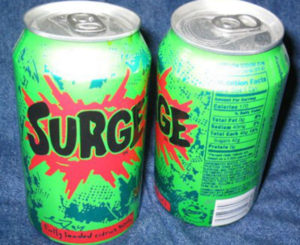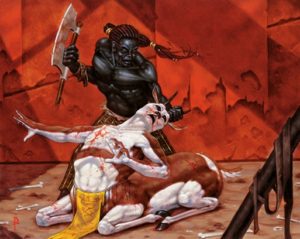Welcome to the new world of Oath of the Gatewatch limited. It turns out two packs in draft and four packs in sealed makes a big difference. With the new front-loaded schedule for limited Grand Prix—the only individual sealed grand prix this year are the week before each of the Pro Tours—we have to learn the new format quickly to compete on a high level. I’m heading to Grand Prix Vancouver this weekend, and many of you will be heading there or to parallel Grand Prix in Mexico City and Nagoya. We have to adjust to our new world quickly.
The strength of the Oath commons makes this a high-powered sealed format. Packs of Oath often have a lot of solid commons. The draft format lacks obvious first picks, and a lot of the good cards sit in a large group that you want in your deck but have a hard time picking between. In sealed, you don’t have to pick—you get the pack! It’s always possible to get a pool full of clunkers, but most of the time you get a solid core of commons to anchor your deck.
Most pools will have a reasonable curve of creatures in some color combinations, making the sealed format more aggressive. It’s still not fast, but you can lose if your opponent has a couple powerful early plays and your first play is Seer’s Lantern. Only the most streamlined aggro decks will make it to the top tables on day one of a Grand Prix, but a lot of the medium-strength decks will apply pressure. You will face those decks during the middle rounds of a long tournament. Those decks can steal games from your bomb-laden masterpiece, which removes your margin for error on losing games to mulligans or mana problems. Mulligan game one and then get hit by a dream curve in game three will happen against some inferior decks.
Because of this, you should build your deck to have meaningful early interaction. Two drop creatures that have useful late-game abilities are crucial. Ondu War Cleric can trade for a Weapons Trainer early, but on turn ten in a board stall its cohort ability can protect from death by topdecked burn spell. Zada’s Commando attacks and blocks well early, and provides reach in board stalls late. Blinding Drone provides defense early as a 1/3 and dominates the board a few turns later. Snapping Gnarlid, by contrast, becomes much worse when you have eight lands in play. Sky Scourer needs a curve of colorless cards to be good, and like the Gnarlid is best on turn two. You need some two drops in this sealed format. Choose the versatile ones.
Oblivion Strike is the best common. No big surprise. If you have one or two in your sealed pool, put them in your deck. Find a way to get some black mana. If you are unfortunate enough to lack enough strong black cards to make it a primary color of your deck, you should still find a way to splash Oblivion Strike. It kills almost everything, and there are a lot of creatures you need to kill. Black seems like the best color, with a number of strong removal spells. Oblivion Strike is one of the most common and close to a bomb in sealed.
Cheap surge enablers that do something useful are good. Boulder Salvo is better in aggressive decks, but even in slow decks it allows you to stabilize a board by playing a cheap creature then killing their 4/4. Most surge cards are great, and while two drops are the most reliable enablers, anything that costs one mana and provides lasting value goes right in your surge deck. Yes, Prophet of Distortion is the gold standard, but cheap equipment also fits the bill. With so many colorless creatures running around, and a decent number of powerful x/1 creatures like Hedron Crawler, Pathway Arrows becomes a reasonable card for grinding value. As bad as Bone Saw is, there are a lot of 2/3 vs 2/3 standoffs. Upgrading yours to 3/3 isn’t bad. You probably won’t have enough surge to make Bone Saw a good card in sealed, but Pathway Arrows should not be overlooked.
Finally, the ability to win without attacking is a huge advantage. I’ve sung the praises of Scholar of Athreos so many times that it should be no surprise that I love Essence Depleter. You need to have a few colorless sources to make it good, but Essence Depleter combines amazingly with Kozilek’s Translator. It will win every long game if your opponent cannot kill it, but often it does not become a threat until the dust settles after they’ve killed your attackers. They may not be able to kill Essence Depleter, or they may have to use their last removal spell on it clearing the way for any big threat to close the game.
Zulaport Chainmage is much worse than Essence Depleter, unless you have allies instead of colorless mana, but it is still good. I’ve lost more than a few games of sealed already to this card smacking me for two every turn. In one game, I had to race Zulaport Chainmage using Sweep Away as a bad unsummon to turn the corner fast enough. Even then it was not enough to keep me out of lethal burn range, and I lost when they drew Rolling Thunder. Like Essence Depleter, Chainmage becomes relevant in the late game after your opponent has used their cheap removal on earlier threats. That makes the 4/2 body less vulnerable than it looks.
Overall, I love the way Oath has shaken up the format. I can’t wait to build a deck and battle in Vancouver this weekend. Maybe I’ll see you there!
Carrie O’Hara is Editor-in-Chief of Hipsters of the Coast.




